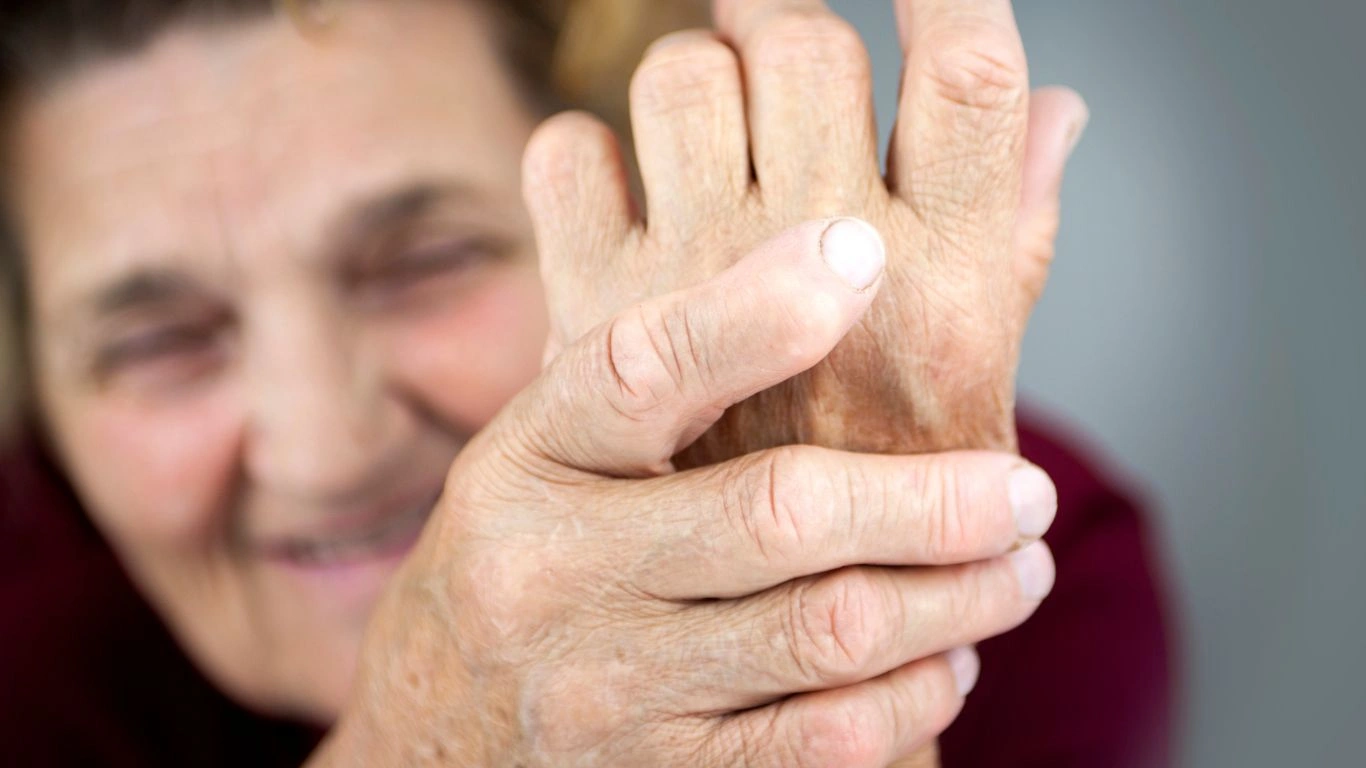Natural Relief Tips for Rheumatoid Arthritis Wrist Pain That Work
Living with rheumatoid arthritis and how to relieve wrist pain naturally is something I talk about with patients almost daily. As a Rheumatology Nurse Practitioner, I’ve seen firsthand how frustrating and limiting wrist pain can be. From difficulty holding a coffee mug to the challenge of buttoning a shirt, it’s often the little things that hit the hardest. And while there’s no one-size-fits-all approach, I’ve found that a blend of lifestyle tweaks, gentle exercises, and natural remedies can make a noticeable difference—sometimes even more than medications alone. Let’s chat about what really works, from the perspective of someone who’s in the trenches helping patients manage these symptoms every day.
What Is Rheumatoid Arthritis, Really?

Rheumatoid arthritis (RA) isn’t just “arthritis” like grandma used to talk about. It’s an autoimmune disease where your immune system mistakenly attacks the lining of your joints. It tends to show up symmetrically—meaning both wrists, both knees, etc.—and it’s a chronic condition that can be unpredictable. One day you’re doing just fine, the next you can barely twist open a jar.
In the clinic, I see a lot of patients who are caught off guard by the intensity of wrist pain specifically. It’s not just discomfort; it’s a deep, aching, sometimes burning sensation that makes daily tasks nearly impossible. Over time, if it’s not managed properly, it can lead to permanent joint damage and loss of mobility. That’s why early intervention—and yes, natural relief options—are so important.
Why the Wrists Take the Hit

The wrists are one of the most commonly affected joints in rheumatoid arthritis, especially in the early stages. Why? Because they’re complex joints with a lot of moving parts, and they’re in constant use. Whether you’re typing, cooking, or picking up your kiddo, your wrists are basically always working overtime. When inflammation from RA sets in, these joints swell and stiffen, making everyday motion incredibly painful.
And here’s something I often share with my patients: even though wrist pain might seem like just another symptom, it’s also a clue. It tells us how active your RA is, and how much joint stress is going on. So if you’re feeling more stiffness or sharp aches than usual, your body’s trying to get your attention.
Rheumatoid Arthritis and How to Relieve Wrist Pain Naturally

Let’s get into the good stuff. I’m a big believer in treating RA with a whole-person approach, and that includes lots of natural strategies for managing wrist pain. I’m not saying toss your meds, but combining conventional treatment with non-pharma options can really boost your results—and your quality of life.
1. Heat and Cold Therapy
Honestly, this one is a patient favorite. Applying a warm compress in the morning can ease stiffness and get your hands moving. At the end of a long day, a cold pack can reduce swelling and dull sharp aches. I usually recommend patients try a warm rice sock in the morning and a gel ice wrap at night. Simple, effective, and easy to do at home.
2. Gentle Wrist Stretches
One of the most underrated tools in your toolkit? Movement. Gentle stretching keeps the joint flexible and helps prevent long-term stiffness. Here are a few wrist exercises I often teach in clinic:
- Wrist flexor stretch: Extend your arm with palm up, and gently pull your fingers back with your other hand.
- Wrist circles: Move your wrists in slow circles, both clockwise and counter-clockwise.
- Prayer stretch: Place your palms together in front of your chest and gently lower your hands while keeping the palms touching.
Don’t push through pain. If it hurts, back off and try again later. Consistency over intensity—that’s the motto.
3. Anti-Inflammatory Foods (Yes, What You Eat Matters!)
I can’t tell you how many people are shocked when I mention that diet affects RA. But the connection between inflammation and food is well-documented. Some of the best anti-inflammatory additions to your plate:
- Fatty fish like salmon, sardines, and mackerel (rich in omega-3s)
- Leafy greens like spinach and kale
- Turmeric and ginger (add them to smoothies or soups!)
- Berries, especially blueberries and strawberries
- Olive oil as a healthier fat alternative
When my patients shift their diets even slightly toward more whole, anti-inflammatory foods, I often hear about less morning stiffness and less swelling. It doesn’t happen overnight, but it’s worth the effort.
4. Wrist Supports and Bracing
During flares or when your wrists are just screaming at you, a soft brace can be a lifesaver. I recommend lightweight wrist supports that stabilize but don’t completely immobilize. You want to protect the joint without causing muscle atrophy. Most pharmacies have decent options, or you can ask your rheumatologist for a custom fit if you need more support.
Some of my patients even sleep with them on—especially if they notice pain first thing in the morning. Just don’t wear them all day every day, or your wrists will start to weaken. Use them as needed, and always combine with stretching and strengthening work.
5. Massage and Topical Relief
Look, I’ll be the first to say: massage therapy isn’t just pampering. It can be incredibly therapeutic when you’re dealing with chronic wrist pain. Whether you’re getting a professional hand massage or just gently rubbing your wrist with a bit of peppermint or CBD oil, that increased circulation can make a big difference.
Some of my favorite topicals to recommend include:
- Menthol-based creams (like Biofreeze)
- Capsaicin creams (they warm up the area nicely)
- Arnica gel (a great homeopathic option)
I always suggest doing a small patch test first—some folks have sensitive skin and react to essential oils or hot/cold agents. But when used properly, these can add another layer of relief to your daily routine.
Staying Active Without Overdoing It

Let’s be real—when your wrists are aching from RA, the last thing you want to do is move them. I totally get it. But here’s the thing: motion is lotion. One of the most effective ways to relieve wrist pain naturally is to keep them moving—just the right amount, and in the right way.
One of my go-to suggestions for patients is low-impact movement. Think yoga, tai chi, or water aerobics. These activities aren’t just gentle on the joints, they also build flexibility, balance, and strength over time. And no, you don’t need to twist yourself into a pretzel—just a few modified poses with mindful breathing can do wonders.
I remember one patient, a retired nurse, who started with chair yoga twice a week. Within a month, her morning wrist stiffness had cut in half. That’s not magic—it’s biology. Movement boosts synovial fluid (your joint’s natural lubricant) and helps reduce inflammation over time.
Try These Gentle Wrist-Activating Exercises:
- Wrist pumps: Slowly bend your wrist up and down while keeping your elbow at your side.
- Wall push-ups: Stand arm’s length from a wall and press gently with your palms. No strain, just controlled movement.
- Stress ball squeezes: Use a soft foam ball to gently squeeze and release, building grip strength.
These might seem basic, but done consistently? They can keep your wrists from locking up and help maintain function long-term.
Mind-Body Tools That Actually Help

Wrist pain isn’t just physical—it messes with your mood, your sleep, and your sense of independence. That’s why I often recommend patients explore mind-body techniques. Yes, this is still about relieving wrist pain naturally, but we’re focusing on the connection between your mind and your joints.
Here’s what I see helping people the most:
- Guided meditation: Apps like Calm or Insight Timer offer pain-specific meditations that help dial down your nervous system’s pain response.
- Deep breathing techniques: A few minutes of belly breathing can reduce inflammation markers in the body. Seriously!
- Progressive muscle relaxation: This technique helps reduce overall muscle tension, including around the wrists.
I had one patient who swore by her morning breathwork routine. She combined 5 minutes of deep breathing with a warm wrist soak and noticed her flare-ups became less intense over time. There’s solid science behind this, too—when you reduce stress hormones, your body’s inflammatory response gets less aggressive.
Supplements and Natural Anti-Inflammatories Worth Considering

Now, let me be clear—I’m not a fan of tossing supplements at every problem. But when used thoughtfully, a few targeted options can really complement your RA treatment and help tame wrist pain. As always, check with your rheumatology provider before adding anything new. But here are a few that come up again and again in my clinical conversations:
1. Omega-3 Fatty Acids
Found in fish oil, these reduce joint stiffness and morning pain for many folks. Look for high-quality, third-party tested brands with at least 1000 mg of EPA/DHA combined. I usually suggest taking it with a meal to avoid any fishy burps (you’re welcome).
2. Turmeric (Curcumin)
Yes, it’s trendy—but there’s a reason. Curcumin, the active compound in turmeric, has been shown to decrease joint swelling and tenderness. I suggest pairing it with black pepper extract (piperine) to boost absorption.
3. Boswellia Serrata
This one flies under the radar, but I’ve seen patients do really well on it. It’s a natural anti-inflammatory herb with effects similar to NSAIDs, but gentler on the stomach. Great option if you’re trying to minimize meds.
4. Vitamin D
Low D levels are super common in RA patients, and deficiency can make joint pain worse. Most labs consider 30-50 ng/mL optimal, so if you haven’t had your levels checked recently, it might be time. I’ve had patients who didn’t even realize they were deficient until they supplemented and started feeling way better.
Listening to Your Body (And Pacing Yourself)
This one might sound obvious, but trust me, it’s often the hardest to put into practice: honor your limits. RA is sneaky. You might feel okay in the morning, start a project, and then bam—wrist pain by lunch. I always tell my patients: your energy is a bank account, and overdrawn joints are a real thing.
Instead of pushing through the pain, try activity pacing:
- Break up chores into short bursts with rests in between.
- Use tools that reduce wrist strain—like jar openers, ergonomic keyboards, or wide-handled utensils.
- Ask for help when needed (and don’t feel guilty about it).
I had a teacher-turned-writer patient who used voice-to-text tools to reduce wrist use. It gave her so much freedom to keep doing what she loved without aggravating her joints. It’s little adaptations like that which add up over time.
Pro Tip:
Keep a “pain and activity journal” for a week. Jot down when your wrist pain spikes, what you were doing, and what helped. You’ll probably spot patterns you didn’t realize were there—and that info is gold for figuring out your personal relief plan.
Sleep: The Underrated Healer for Joint Pain

If there’s one thing that doesn’t get enough credit in managing rheumatoid arthritis, especially wrist pain, it’s good, restorative sleep. I see it constantly—patients come in exhausted, and their flares are worse. It’s not a coincidence. Poor sleep increases inflammation. More inflammation = more joint pain. It’s a vicious cycle.
One of my long-time patients used to joke that if she could just get eight solid hours of sleep, she could conquer the world—even with RA. She wasn’t wrong. When we focused on improving her sleep hygiene, her daytime wrist pain noticeably lessened.
Natural Ways to Support Better Sleep with RA:
- Magnesium supplements – This mineral supports muscle relaxation and nervous system balance. I usually recommend magnesium glycinate, which is gentler on the stomach.
- Weighted blankets – Not too heavy, but just enough to promote a sense of calm and reduce nighttime tossing.
- CBD oil (if approved by your provider) – Some patients find it helps with both anxiety and joint discomfort overnight.
- Limit screens before bed – Blue light delays melatonin release, which is the hormone that helps you sleep. Switch to books or soft lighting at least 30 minutes before bed.
I always remind my patients: sleep isn’t optional. It’s therapy. If your sleep is off, your pain management plan will always feel like it’s playing catch-up.
Emotional Wellness and Chronic Pain: Don’t Skip This Part

This one hits close to home. I’ve had many strong, capable patients break down in my office—not because the pain was unbearable (though it often was), but because the emotional weight of RA can be just as heavy. Wrist pain might seem small, but when it robs you of independence or identity, the toll is very real.
Managing rheumatoid arthritis naturally includes addressing the emotional side of the journey too. Here are some supportive, natural tools that have helped my patients (and frankly, even me when I’ve dealt with personal health challenges):
Helpful Strategies for Emotional Support:
- Journaling: Getting thoughts out of your head and onto paper can release tension and help track emotional triggers.
- Support groups: Whether online or local, connecting with others who “get it” can provide relief in ways no medication can.
- Cognitive behavioral therapy (CBT): This type of therapy can be amazing for reframing negative thought loops around pain and limitations.
- Nature therapy: A short daily walk, even around your block, can be powerful. Fresh air and movement help regulate mood and reduce inflammation.
And let me say this clearly: there is no weakness in needing support. If you’re reading this and thinking, “I’ve been trying to tough it out,” consider this your gentle nudge to let someone in.
Prevention and Long-Term Joint Protection
Here’s a bit of tough love I give my newly diagnosed patients: if you want to stay ahead of RA, you’ve got to be proactive, not reactive. That means even if your wrists feel okay right now, you still need to be protecting them daily.
Simple Daily Habits That Protect Your Wrists:
- Use assistive devices – Jar openers, electric can openers, ergonomic scissors… they exist for a reason. Take the pressure off your joints.
- Split up tasks – Don’t power through big cleaning or organizing days. Rest often and switch between hand-intensive and hands-free activities.
- Strengthen supporting muscles – Work on forearm and upper arm strength. Stronger muscles help share the load, giving your wrists a break.
- Use voice-to-text tools – Save your fingers and wrists from excessive typing. Many phones and computers now have great voice recognition tools.
It’s really about respecting the long game. If you do a few small things every day, you’ll notice that your wrists stay more functional and less inflamed over time. I’ve watched patients go from multiple flares a month to barely any simply by staying consistent with these small, daily choices.
Final Thoughts: You’re Not Alone in This
Whether you were recently diagnosed or you’ve been living with RA for years, I hope this article gave you more than just tips—I hope it gave you hope. Rheumatoid arthritis and how to relieve wrist pain naturally is a conversation that deserves more attention, and it’s one I’ll keep having with my patients, friends, and anyone willing to listen.
Remember: You are the expert of your own body. Take what resonates, try what feels right, and always advocate for yourself. And if something’s not working, don’t be afraid to change course. Healing isn’t linear—it’s messy, personal, and often unexpected.
Wrist pain might be part of your story, but it doesn’t have to write the whole book. You’ve got this—and you’ve got options.
References
Disclaimer
This article is intended for informational purposes only and is based on professional experience as a Rheumatology Nurse Practitioner. It is not a substitute for medical advice, diagnosis, or treatment. Always consult with your healthcare provider before making changes to your health routine, especially if you have a chronic condition such as rheumatoid arthritis.

Tarra Nugroho is a dedicated Nurse Practitioner with a strong foundation in family and preventive care. She brings both compassion and clinical expertise to her practice, focusing on patient-centered care and health education. As a contributor to Healthusias.com, Tarra translates medical knowledge into clear, empowering articles on topics like women’s health, chronic disease management, and lifestyle medicine. Her mission is simple: help people feel seen, heard, and informed—both in the clinic and through the content she creates. When she’s not caring for patients, Tarra enjoys weekend hikes, plant-based cooking, and curling up with a good health podcast.






